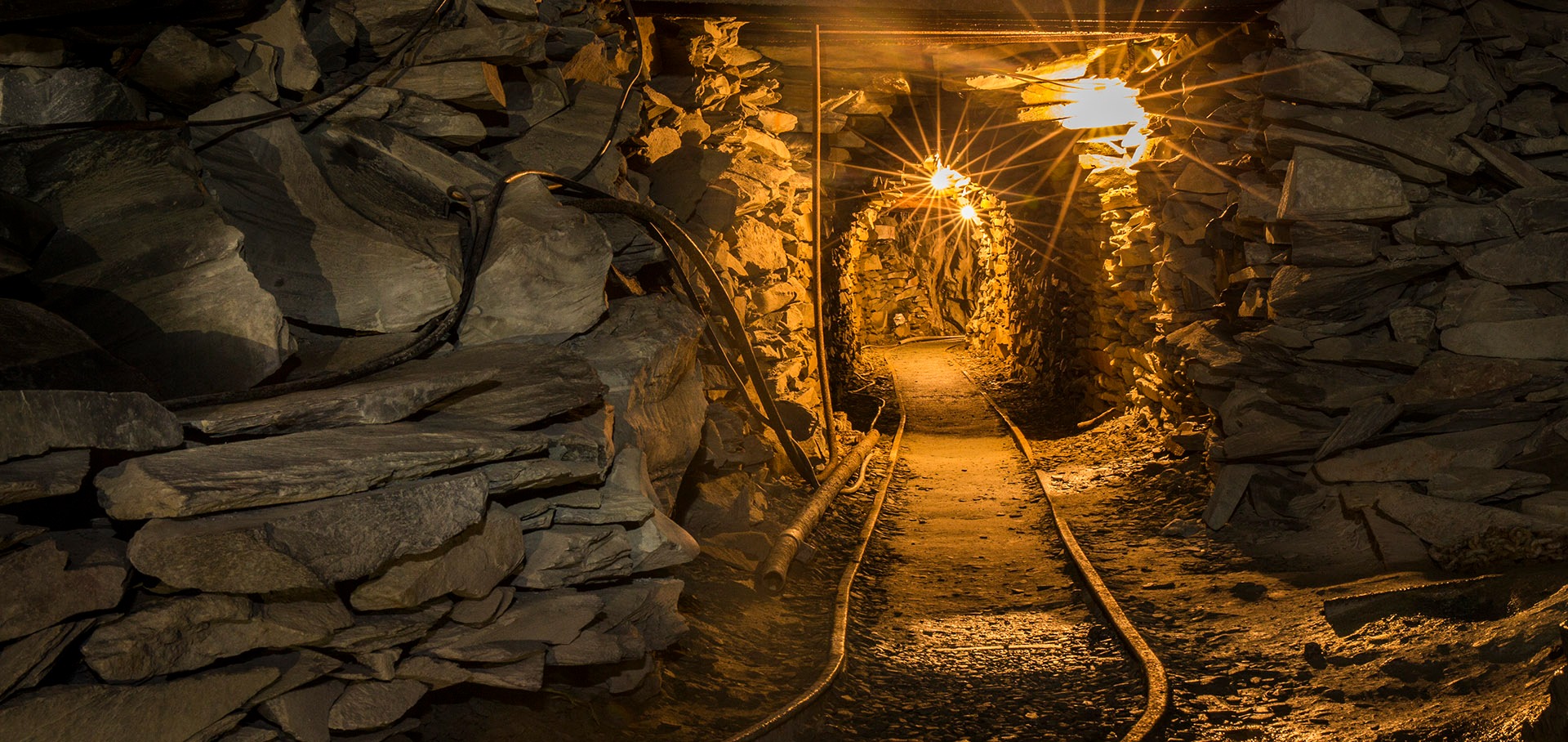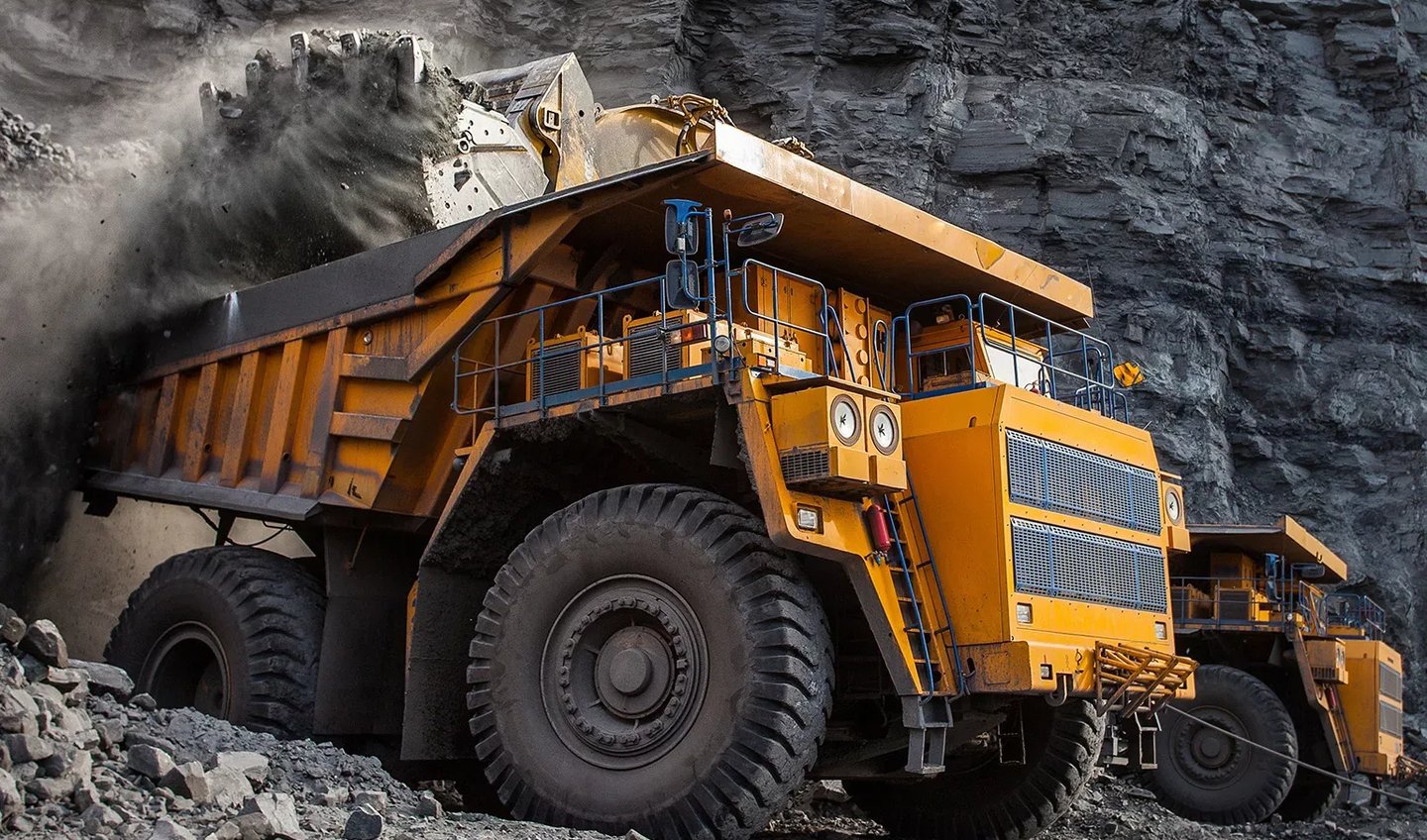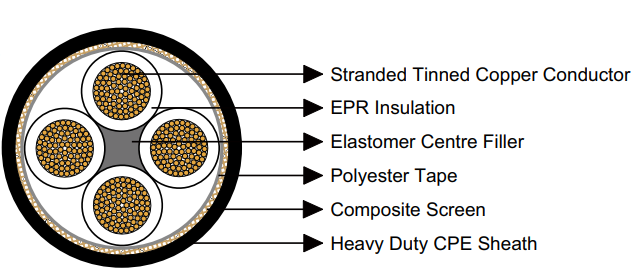Type 2S 1.1/1.1 kV Collectively Screened Mining Cables
Deep beneath Australia's rugged landscape, mining operations rely on sophisticated power distribution systems that must function reliably in some of the harshest industrial environments imaginable. At the heart of these systems are specialised cables designed to withstand the unique challenges of underground mining while delivering consistent power to critical equipment.
5/20/20258 min read

Type 2S 1.1/1.1 kV Collectively Screened Mining Cables
Introduction
Deep beneath Australia's rugged landscape, mining operations rely on sophisticated power distribution systems that must function reliably in some of the harshest industrial environments imaginable. At the heart of these systems are specialised cables designed to withstand the unique challenges of underground mining while delivering consistent power to critical equipment.


What Is a Type 2S 1.1/1.1 kV Collectively Screened Cable?
Type 2S 1.1/1.1 kV collectively screened cables are medium-voltage rubber-insulated power cables specifically engineered for underground mining applications. These cables feature a continuous copper braid "collective" screen that provides essential earth continuity and electromagnetic interference (EMI) control. Manufactured to Australian standards (AS/NZS 1972:2006), these cables represent a carefully balanced design that addresses the multifaceted demands of Australia's mining industry.
The "2S" designation refers to the cable's construction type within the Australian standards framework, while the "1.1/1.1 kV" rating indicates its voltage capacity (phase-to-phase/phase-to-earth). This seemingly modest voltage rating belies the cable's robust construction - a necessity given the punishing conditions it must endure.
Why "Collectively Screened"?
The term "collectively screened" describes one of the cable's most important safety and performance features. Unlike individually screened cables where each core has its own separate screen, collectively screened cables feature a single continuous braided copper screen that surrounds all cores together. This design serves two critical functions:
First, it provides a low-impedance earth path, ensuring rapid and effective fault clearance if damage occurs. In the confined, often wet environment of Australian mines, this electrical safety feature is literally lifesaving. Second, the collective screen acts as an electromagnetic shield, preventing interference between power circuits and nearby control systems. This shielding is particularly important in modern Australian mining operations, where sensitive electronic equipment increasingly controls critical safety and production systems.
Application Scenarios
Type 2S cables are remarkably versatile and can be found throughout Australian mining operations in various configurations. Their applications range from powering large stationary equipment to supplying mobile machinery and lighting systems.
Stationary Machine Wiring
In fixed installations throughout Australian mines, Type 2S cables reliably power essential equipment including pumps that prevent flooding, crushers that process ore, and conveyor drives that transport materials. These stationary applications benefit from the cable's durability and electrical performance, particularly its ability to operate in humid, dusty conditions typical of Australian underground mines.
Between Mobile Equipment
The flexible nature of Type 2S cables makes them ideal for connecting mobile mining equipment like shuttle cars, roof supports, and drilling rigs common in Australian coal and hard rock mining operations. In these applications, the cable's resistance to repeated flexing, crushing, and abrasion becomes paramount. Australian mining regulations are particularly stringent regarding trailing cables, reflecting the dangerous environments in which they operate.
Longwall and Roadway Lighting Circuits
Illumination is critical for both safety and productivity in underground mines. Type 2S cables are frequently employed in lighting circuits along longwall faces and access tunnels, providing stable power despite the constant vibration, dust, and occasional water exposure typical in Australian mining environments. The collectively screened design helps prevent interference with adjacent communications systems, which are essential for coordination and emergency response.
Control and Instrumentation Cores
Modern Australian mining equipment increasingly integrates control systems with power distribution. Many Type 2S cables include additional twisted-pair control or pilot cores alongside the main power conductors. This integrated approach reduces the total number of cables required in cramped mining environments while maintaining signal integrity thanks to the collective screen's shielding properties.
Key Electrical & Mechanical Parameters
Voltage Rating and Current Capacity
Type 2S cables are rated at 1.1/1.1 kV (phase-to-phase/phase-to-earth) in accordance with Australian Standard AS/NZS 1972:2006. This rating is carefully selected to balance safety margins against practical considerations like cable diameter and flexibility. In Australian underground mines, the standard voltage for distribution is typically 1,000V, making these cables perfectly suited to the application.
The current-carrying capacity varies significantly based on conductor size and core count. Conductor sizes typically range from 1.5 mm² to 20 mm², with corresponding current ratings between approximately 10 A for the smallest configurations and 100 A for larger ones. When selecting cables for Australian mining applications, engineers must consider factors like ambient temperature, installation method, and duty cycle - all of which can significantly affect current capacity.
Conductor Construction
The conductors in Type 2S cables are made from stranded, tinned annealed copper. This material choice is deliberate and addresses several key requirements. The stranded construction provides the flexibility needed to withstand repeated bending and flexing without metal fatigue leading to breakage. In Australian mining operations, where equipment is frequently moved and cables are often redeployed, this flexibility is essential.
The tinning process applies a thin layer of tin to each copper strand, providing excellent corrosion resistance. This feature is particularly valuable in Australian mines, where groundwater can be highly mineralized and corrosive. The fine stranding pattern (typically 30 × 0.25 mm strands for 1.5 mm² conductors) further enhances flexibility while maintaining electrical performance.
Insulation & Bedding
The insulation material for Type 2S cables is typically Ethylene-Propylene Rubber (EPR). This synthetic rubber compound offers exceptional thermal stability and excellent dielectric properties, maintaining its insulating characteristics even when subjected to the temperature fluctuations common in Australian mining operations.
EPR also exhibits remarkable resistance to ozone, which can be present in underground environments due to electrical equipment operation. Unlike some other insulation materials, EPR maintains its flexibility over time and does not become brittle with age - a critical consideration for cables that may remain in service for many years in challenging conditions.
Between the insulated cores and the collective screen, a polyester tape bedding is applied. This seemingly simple component serves important functions: it maintains proper core geometry, prevents mechanical deformation of the insulation during flexing, and provides an additional layer of electrical isolation between the conductors and screen.
Collective Screen & Sheath
The collective screen consists of copper braid interwoven with polyester yarn. This construction method creates a screen that is both electrically effective and mechanically flexible. The copper provides the necessary conductivity for fault currents and EMI shielding, while the polyester reinforcement preserves flexibility and prevents the screen from separating during repeated bending.
Australian mining regulations place particular emphasis on proper screening and earthing of cables, making this component especially important for compliance. The screen typically provides between 12.1 mm² and 159.0 mm² of copper area, depending on cable configuration, ensuring adequate current-carrying capacity during fault conditions.
The outer sheath uses heavy-duty Chlorinated Polyethylene (CPE), a specially formulated compound that offers exceptional resistance to abrasion, cuts, and tears. This robustness is essential in the rough environment of Australian mines, where cables may be dragged across sharp rock surfaces or crushed under vehicle wheels. CPE also offers excellent resistance to oils, greases, and many solvents commonly found in mining operations, from hydraulic fluids to diesel fuel.




Potential Mining Challenges & FAQ
Mechanical Abrasion and Impact
Q: How resistant is the cable to abrasion and rock impact in typical Australian mining conditions?
A: The CPE sheath is specifically formulated to withstand the severe mechanical stresses encountered in Australian underground mines. It offers superior cut, gouge, and abrasion resistance compared to many other sheathing materials. The combination of the tough outer sheath with the polyester-reinforced copper screen and bedding creates a cable that can endure being dragged over sharp rock faces, occasional impact from falling debris, and even limited vehicle traffic. However, like all cables, systematic care in installation and protection in high-risk areas remains important for maximizing service life in Australia's demanding mining environments.
Chemical Exposure (Oils, Greases)
Q: Will mine lubricants or spilled fuel typical in Australian mining operations degrade the cable?
A: CPE sheathing is specifically selected for its excellent resistance to oils, greases, and many solvents commonly found in Australian mines. Hydraulic fluids, gear oils, diesel fuel, and other petroleum-based products have minimal effect on the sheath's integrity even with prolonged exposure. This chemical resistance is particularly important in mechanized mining operations, where hydraulic leaks and fuel spills are difficult to avoid entirely. The cable's resistance to these substances helps maintain safety and performance over its operational lifespan in Australian mines, where equipment maintenance often occurs in-situ rather than in dedicated workshops.
Moisture and Water Ingress
Q: Can these cables handle the wet conditions often encountered in Australian underground mines?
A: Both the EPR insulation and CPE sheath provide excellent resistance to water absorption, making these cables well-suited to the damp to occasionally wet conditions frequently encountered in Australian underground mines. While the cables are not designed for permanent submersion, they can withstand temporary flooding of roadways and wash-down cleaning procedures.
For optimal performance in Australia's mining environments, proper installation practices are crucial, particularly regarding terminations. Appropriate cable glands with compression seals should be used to prevent water tracking along the conductors and into equipment enclosures. In exceptionally wet areas of Australian mines, additional measures like sealing compounds at terminations may be recommended to ensure long-term reliability.
Electromagnetic Interference (EMI)
Q: How does the collective screen mitigate electromagnetic interference in complex mining electrical systems?
A: The continuous copper braid screen forms an effective Faraday cage around the power conductors, significantly reducing both incoming and outgoing electromagnetic interference. This shielding function is increasingly important in modern Australian mining operations, where sensitive electronic control systems often operate in close proximity to power cables carrying high currents.
The collective screen diverts stray electrical fields to earth, preventing them from inducing voltages in nearby signal cables that might carry critical safety and production data. Conversely, it also contains the electromagnetic fields generated by the power conductors themselves, reducing their impact on surrounding equipment. In Australian mines, where communication and control systems are fundamental to both safety and efficiency, this EMI protection is an essential feature rather than a luxury.
Thermal and Fire Safety
Q: What is the maximum operating temperature these cables can withstand in hot Australian mine conditions?
A: The EPR insulation and CPE sheath combination typically allows continuous operation at conductor temperatures up to 90°C, with short-term overloads permissible up to 130°C. This thermal rating provides sufficient headroom for Australian mining operations, where ambient temperatures can be elevated due to geothermal gradients and limited ventilation.
It's worth noting that current ratings provided in cable specifications assume standard installation conditions, and derating factors must be applied for high ambient temperatures, grouped installation, or poor ventilation - all situations commonly encountered in Australian underground mines.
Q: How does the cable behave in fire conditions?
A: While Type 2S cables are not classified as low-smoke zero-halogen (LSZH) cables, they do offer reasonable performance during brief fire exposure. The EPR insulation maintains its dielectric properties longer than many alternative materials when exposed to heat, helping to ensure that critical equipment remains operational during the initial stages of an emergency.
This characteristic is particularly important in the Australian context, where mining safety regulations emphasize the maintenance of power to evacuation and safety systems during emergencies. The cables are designed to provide sufficient time for safe evacuation before critical failure occurs. However, it should be noted that in permanent installations where fire risk is significant, specialized fire-resistant cable types might be specified instead of or in addition to Type 2S cables.

Conclusion
Type 2S 1.1/1.1 kV collectively screened mining cables represent a sophisticated engineering solution to the unique challenges of power distribution in Australian underground mining operations. Their balanced design incorporates flexibility, electrical performance, and mechanical robustness to create a product that has become an industry standard throughout Australia's mining regions.
The continuous copper screen provides essential safety functions through effective earthing and EMI shielding, while the carefully selected insulation and sheathing materials ensure longevity in harsh conditions. From the flexible conductor construction to the abrasion-resistant outer sheath, every component has been selected with the demanding Australian mining environment in mind.
As Australian mining operations continue to evolve, with increasing automation and electronic control systems, the electromagnetic shielding provided by these collectively screened cables becomes even more valuable. While they may lack the visibility of the massive machinery they power, these specialized cables are truly the lifelines of modern underground mining - delivering safe, reliable power to the equipment that keeps Australia's mining industry productive and its miners safe.


